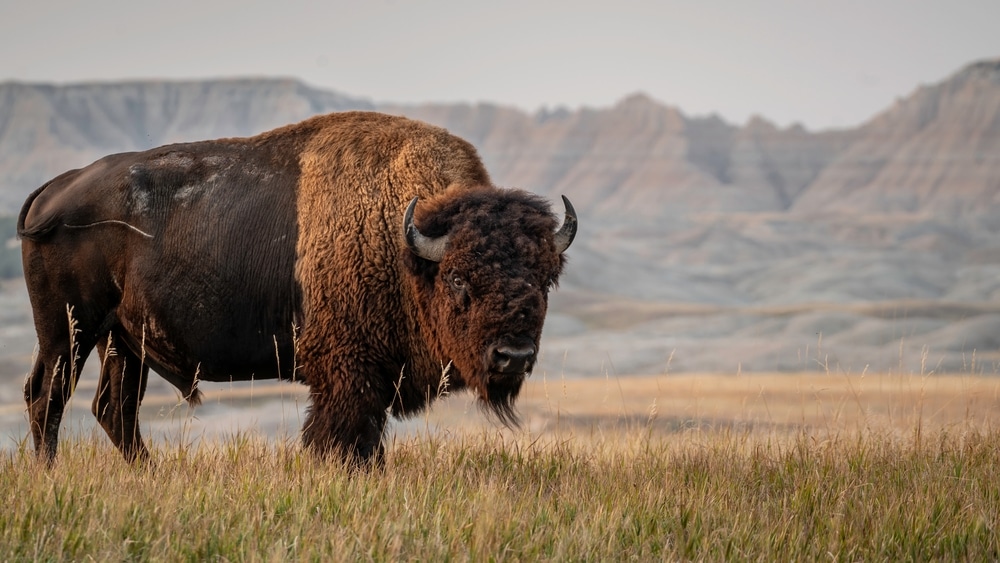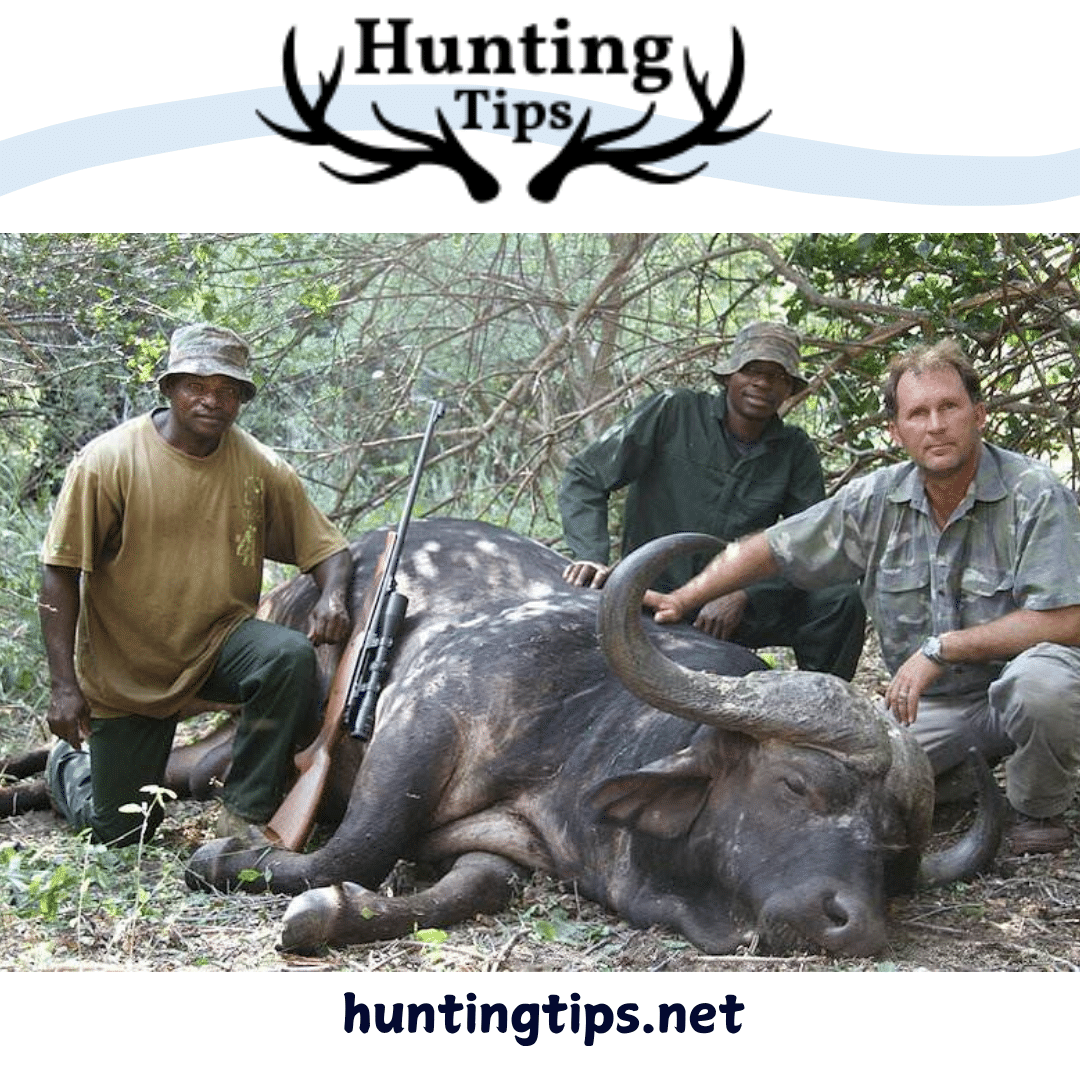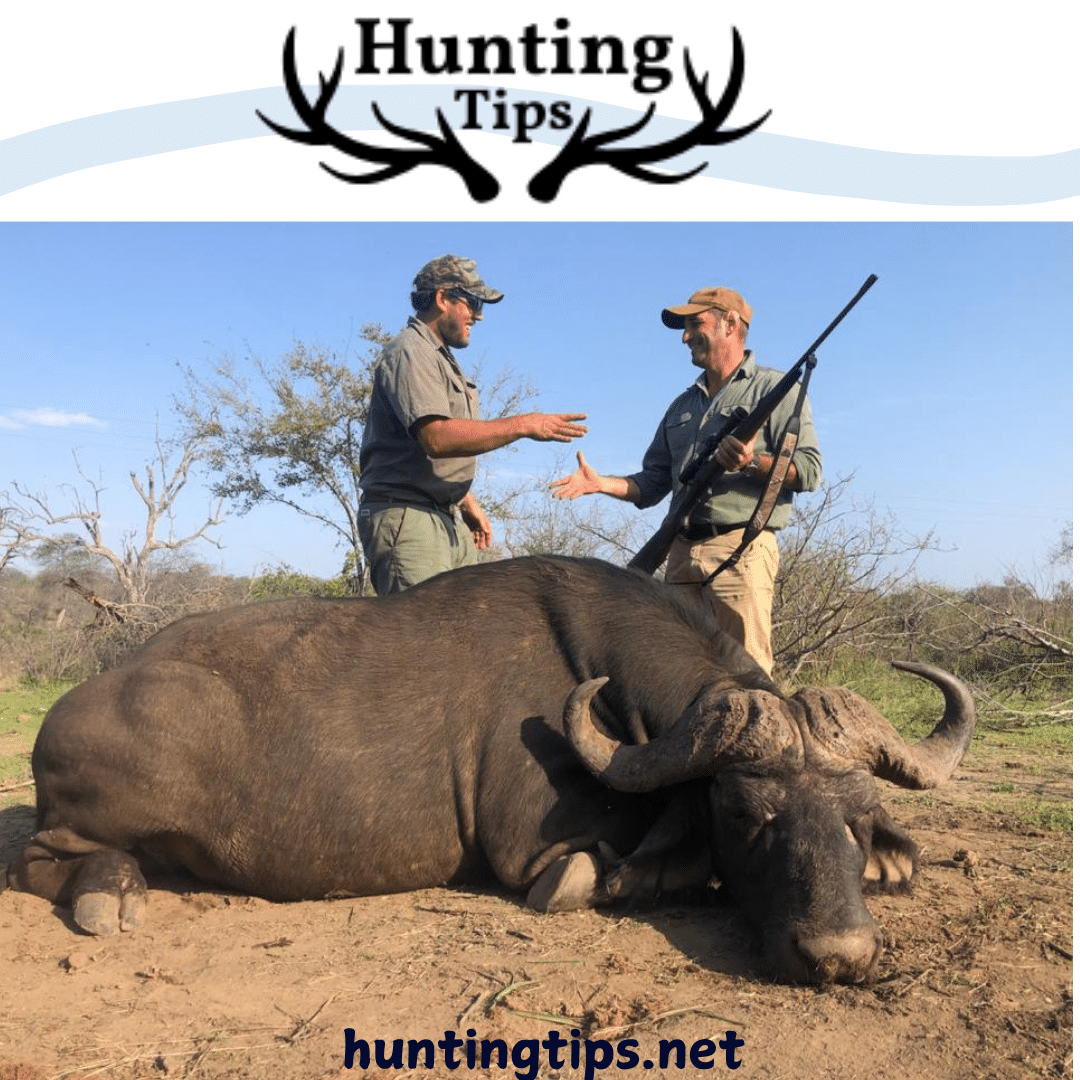Table of Contents
Buffalo hunting, steeped in tradition and history, remains one of the most challenging and rewarding pursuits for hunters. These massive animals, often symbolizing strength and resilience, require careful planning, patience, and precision to harvest ethically and successfully. Whether you’re pursuing American bison in North America or Cape buffalo in Africa, understanding their behavior and using expert strategies can enhance your experience. Here’s a comprehensive guide to help you achieve success in buffalo hunting. Discover tried-and-true tactics, acquire vital safety precautions, and master tracking and stalking these magnificent animals. Get ready to increase your hunting skills and go on life-changing adventures searching for the mighty buffalo. Want an expert guide for mule deer hunting? If you’re a hunting enthusiast, here is the complete guide to know about hunting the mule deer.
1. Know Your Target Species

Before setting out, it’s crucial to understand the behavior, habitat, and physical characteristics of the buffalo species you’re hunting.
American Bison
- Found primarily in North America.
- Prefers open plains, grasslands, and valleys with nearby water sources.
- Moves in herds, but solitary bulls can also be encountered.
- Known for their massive size and unpredictable behavior when threatened.
African Cape Buffalo
- Found across sub-Saharan Africa.
- Typically inhabits savannas, swamps, and woodlands.
- Forms large herds but also includes older “dagga boys” (solitary, older bulls).
- Aggressive and considered one of Africa’s most dangerous game animals.
2. Know the Regulations of Buffalo Hunting
Knowing the rules is important, especially while participating in activities like buffalo hunting. American bison hunting is governed by regulations that guarantee sustainable methods and animal preservation. Neglecting rules may result in fines and damage to the environment. For example, historically, excessive bison hunting led to the “Black Death,” which destroyed their numbers. Regulation awareness and observance prevent such tragedies. It encourages ethical hunting and protects the ecosystem and the species. Hunters support conservation efforts by remaining knowledgeable and law-abiding, which spares future generations from making the same mistakes and enables them to appreciate the beauty and significance of the American bison.
3. Equip Yourself Properly
4. Scouting
Beyond ropes and the badges, scouting is about preparation and adventure. From wild American grasslands to African safaris, scouting imparts vital skills for exploration and survival. Scouts develop their skills while learning to appreciate nature, whether they are tracking buffalo or learning how to navigate. The scouts’ sense of fellowship flourishes in the jungle as they work together to overcome obstacles. Inquiries such as “Can you hunt buffalo?” present chances to learn about ethical management and preservation. Scouts gain a deep respect for nature and a lasting sense of amazement from adventures such as cape buffalo hunting or watching bison in their native environment.
Scout the Area
- American Bison: Look for signs such as wallows, trails, and fresh dung in open plains and valleys.
- Cape Buffalo: Focus on watering holes and areas with thick vegetation, where buffalo often rest during the heat of the day.
Study Herd Behavior
Observe the herd from a distance to identify the dominant bull, younger males, or cows based on your hunting permit.
Understand Wind and Terrain
Buffalo has a keen sense of smell and can detect danger from over a mile away. Always approach with the wind in your favor. Use natural cover like trees, rocks, and hills to stay concealed.
5. Approach with Caution

Buffalo are powerful and unpredictable. Your approach should be slow, deliberate, and strategic.
Spot and Stalk Method
- Locate the Herd: Use binoculars to find the herd and identify your target.
- Assess the Terrain: Plan your route based on natural cover and wind direction.
- Close the Distance: Move quietly and remain low to avoid detection. A distance of 100–200 yards is ideal for a clear shot.
Safety Precautions
- Avoid getting too close to the herd, as spooking one buffalo can cause a stampede.
- Keep an escape route in mind in case the buffalo charges.
Shot Placement
When it comes to buffalo hunting, shot placement is important, particularly on Cape hunts in South Dakota or other parts of the country. For a quick and moral kill, hunters must aim for essential organs. Accuracy is essential to guarantee a clean kill and prevent needless suffering.
Vital Areas
- Aim for the heart and lungs, located just behind the shoulder.
- For Cape buffalo, a frontal shot should target the center of the chest, while a side shot should aim just above the front leg.
Follow-Up Shots
Buffalo are tough animals and may require additional shots to bring them down. Always be ready to fire again if the buffalo shows signs of movement.
6. Post-Hunt Recovery
Once the buffalo is down, the work has only begun.
Field Dressing
- Use a sharp knife to field dress the animal promptly, as the large size of buffalo makes it essential to preserve the meat and hide.
- For American bison, focus on separating large muscle groups for easier transportation.
- For Cape buffalo, enlist the help of guides or locals, as these animals are often in remote and dangerous areas.
Meat Processing
Buffalo meat is highly prized for its flavor and nutritional value. Store it in a cooler or freezer to prevent spoilage.
Trophy Care
If you plan to keep the horns or hide them as a trophy, work with a taxidermist to preserve them properly.
7. Legal and Ethical Considerations

Responsible hunting is essential for the conservation of buffalo populations and the preservation of hunting traditions.
Licenses and Permits
- Ensure you have the necessary permits and adhere to hunting regulations in your area.
- Some regions may require you to hunt with a guide or outfitter.
Respect Local Communities
- In Africa, hunting often involves local communities. Share the meat and support conservation efforts to benefit the area.
- Be mindful of cultural practices and traditions related to hunting.
Practice Ethical Hunting
- Take only clean, ethical shots to minimize suffering.
- Never waste meat or other parts of the animal.
8. Safety Tips
Hunting buffalo is inherently dangerous, especially for Cape buffalo, known for their aggressive nature.
- Always hunt with a partner or guide for added safety.
- Remain vigilant and aware of your surroundings, as buffalo can circle back and charge unexpectedly.
- Carry a first aid kit and emergency communication device in case of accidents.
Final Thoughts
Buffalo hunting is not just a physical challenge but also a mental and emotional experience. It demands respect for the animal, the environment, and the hunting tradition itself. By preparing thoroughly, practicing patience, and adhering to ethical principles, you can enjoy a successful and memorable hunt while contributing to the conservation of these magnificent creatures.



